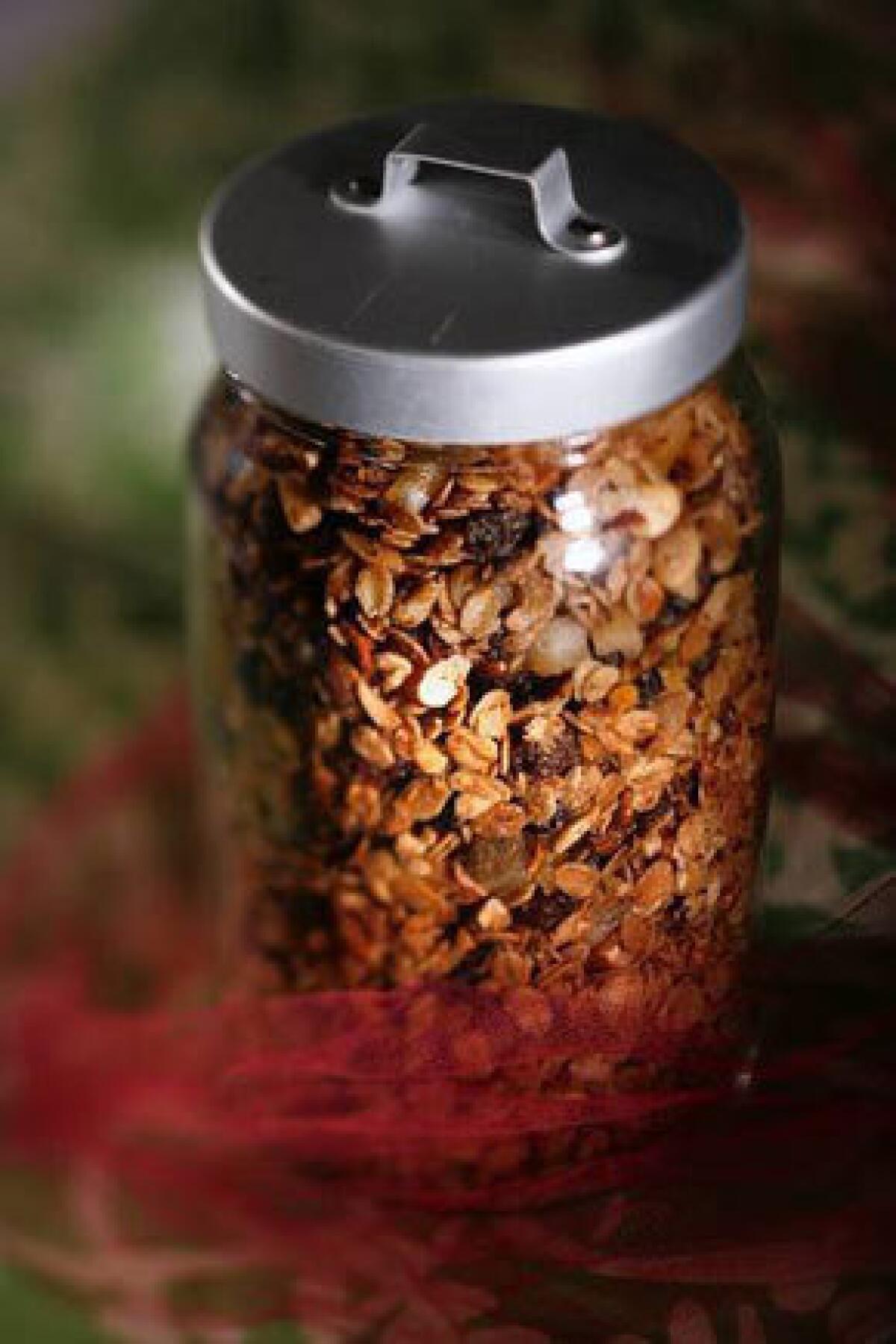The California Cook: Thereâs oatmeal, and then thereâs oatmeal

Now that Thanksgiving is out of the way, maybe we can talk about something that is really important: oatmeal.
Letâs be specific. What most Americans think of as âoatmealâ is really rolled oats. You know, the stuff that comes in the big cardboard tube with the smiling Quaker on the front. These are oat groats (the grain with the husk removed) that have been steamed to soften them and then rolled flat. This process lets you cook them more quickly at home. The difference between rolled oats that are labeled âold-fashionedâ and âquick-cookingâ is how thickly theyâre rolled.
Real oatmeal is made from raw oat groats that are chopped to a fairly uniform size. It takes longer to cook and has a firmer texture than rolled oats.
I use rolled oats for making cookies and things like that, but you canât match the real stuff for cereal. And because there is no kitchen project too minor for a kitchen geek to overthink, I have made something of a small science out of cooking my morning oatmeal. Itâs not hard, but Iâm convinced that it makes a difference in flavor.
I use the McCannâs Irish Oatmeal that comes in those cool tins. Use a dry saucepan, 1 quart is fine for two or three people. Cook the oatmeal over medium heat until it smells nice and toasty. Thatâll take about 3 or 4 minutes, depending on the heat. Youâll hear it start to pop when itâs ready.
When your cereal begins to sing, add four times the volume of oats in water (1/3 cup of oats, enough for two people, will take 1 1/3 cups water). Increase the heat to high until the water starts to boil, give the pot a good stir, then turn the flame to low to maintain a decent simmer.
Partially cover the pan with a lid, but be sure to prop it askew with a wooden spoon or a whisk. This is important: If the lid is on too tight, the oatmeal will boil over, and there is no cleanup project worse than scraping baked-on oatmeal off of stove-top burners.
Let the oatmeal simmer for a good 20 minutes or so. You donât need to pay much attention, but if youâre going to walk the dog, put a flame-tamer underneath the pan to keep it from scorching. When the oatmeal is done, there will probably be some liquid on top, and there may be a thin layer of dried flour-skin. This will disappear when you stir it. The oatmeal itself will be tender but still have a bit of âpop.â
Whisk in butter according to your conscience, toss in a small handful of dried fruit (I use a mix of raisins, sour cherries and cranberries), cover tightly and let stand off heat for five minutes for the fruit to soften.
You can doctor this base however you want. I like a mix of brown and white sugar (brown for molasses, white for sweetness) or maybe some maple syrup. Then some chopped toasted nuts â almonds or walnuts. Finally, I add just enough milk to make the mixture creamy. If I have leftover steamed milk from the morning coffee, I might use that. And if Iâm feeling splurge-y, nothing but half-and-half; thatâs just how I roll.
Those quicker-cooking rolled oats are great for granola. And when Iâm not eating real oatmeal (foolish consistency, etc.), my breakfast is usually fruit, yogurt and granola from Christine Mooreâs excellent recipe in her new âLittle Flowerâ cookbook. I say âbased onâ because, after following Mooreâs script exactly the first time, Iâve thrown in a few little changes, honoring the recipe in structure if not in detail.
In the last month Iâve made this recipe at least once a week (depending on how quickly we go through it). And I donât think Iâve ever made it exactly the same way twice. I change the mix of the nuts and dried fruit depending on what appeals to me at the moment (and depending on what I have left from other cooking â this is a great way to clean out all those odds and ends of nuts you probably have in your freezer).
Start with a bunch of fruit (lately Iâve been using persimmons from our tree, spiked with a bit of lime juice), then add a handful of granola and top with a good dollop of yogurt sweetned with honey.
This granola mix would make a terrific gift too, packaged in Ikea storage jars. Be sure to include the recipe, because folks will definitely want to fix it again.
And, after all, there are more holidays just around the corner.
More to Read
Eat your way across L.A.
Get our weekly Tasting Notes newsletter for reviews, news and more.
You may occasionally receive promotional content from the Los Angeles Times.










